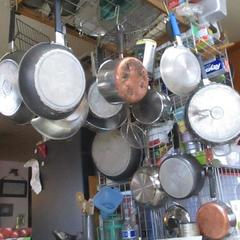Here are the results from the latest tests:
Time Frame of Readings:
A = immediately after ganache was made
B = 3 hours later
C = 12 hours after reading B
Readings for Each Sample:
1 = sample was left uncovered for all readings and was not stirred until before reading C
A = 0.69
B = 0.58
C = 0.69
2 = sample was covered between all readings and was not stirred until before reading C
A = 0.69
B = 0.75
C = 0.75
3 = sample was left uncovered for all readings and stirred before readings A and C
A = 0.67
B = 0.70
C = 0.69
The instrument was the Pawkit from Meter Group (previously Decagon Devices). The readings are supposed to be accurate within 0.2 [correction: 0.02] units of water activity.
For me, Sample 1 is the most relevant because the readings clearly show that my previous conclusion, that by simply letting a ganache sit for a while its Aw will decrease, was inaccurate. I should have thought of the fact that the meter was measuring the top surface (at least I think that's what it does). The 0.69 reading stubbornly remains the same when the sample is stirred.
I am puzzled by the readings for sample 2 (which was covered throughout): they actually rise over time, whether stirred or not.
I would think sample 3 most clearly parallels what the chocolatier experiences since stirring the sample before readings brings more of the ganache to the top for measuring each time (why the second reading rose I cannot explain).
My (disappointing) conclusion: The Aw reading of a ganache remains approximately the same throughout the process--what you initially make is what you get. There are, it would seem, no magic factors in getting the water level activity lower.





